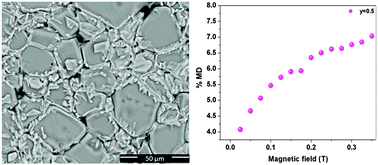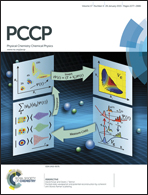Origin of magnetocapacitance in chemically homogeneous and inhomogeneous ferrites
Abstract
The present work mainly focuses on the magnetodielectric (MD) effect in polycrystalline Ni0.9−yCuyZn0.1Fe1.98O3.97 (y = 0, 0.1, 0.2, 0.3, 0.4, 0.5) ferrite synthesized by a solid-state reaction method. Sintered samples showed the formation of CuO-rich grain boundary segregation for y ≥ 0.2. The appearance of segregation made the present material chemically inhomogeneous and electrically heterogeneous. A negative MD response was observed in homogeneous ferrite for y = 0 and 0.1 due to lattice distortion (an intrinsic effect), whereas a positive MD response occurs in chemically inhomogeneous segregated ferrite (y ≥ 0.2) due the collective effects of Maxwell–Wagner (MW) polarization with intrinsic magnetoresistance (an extrinsic effect).


 Please wait while we load your content...
Please wait while we load your content...